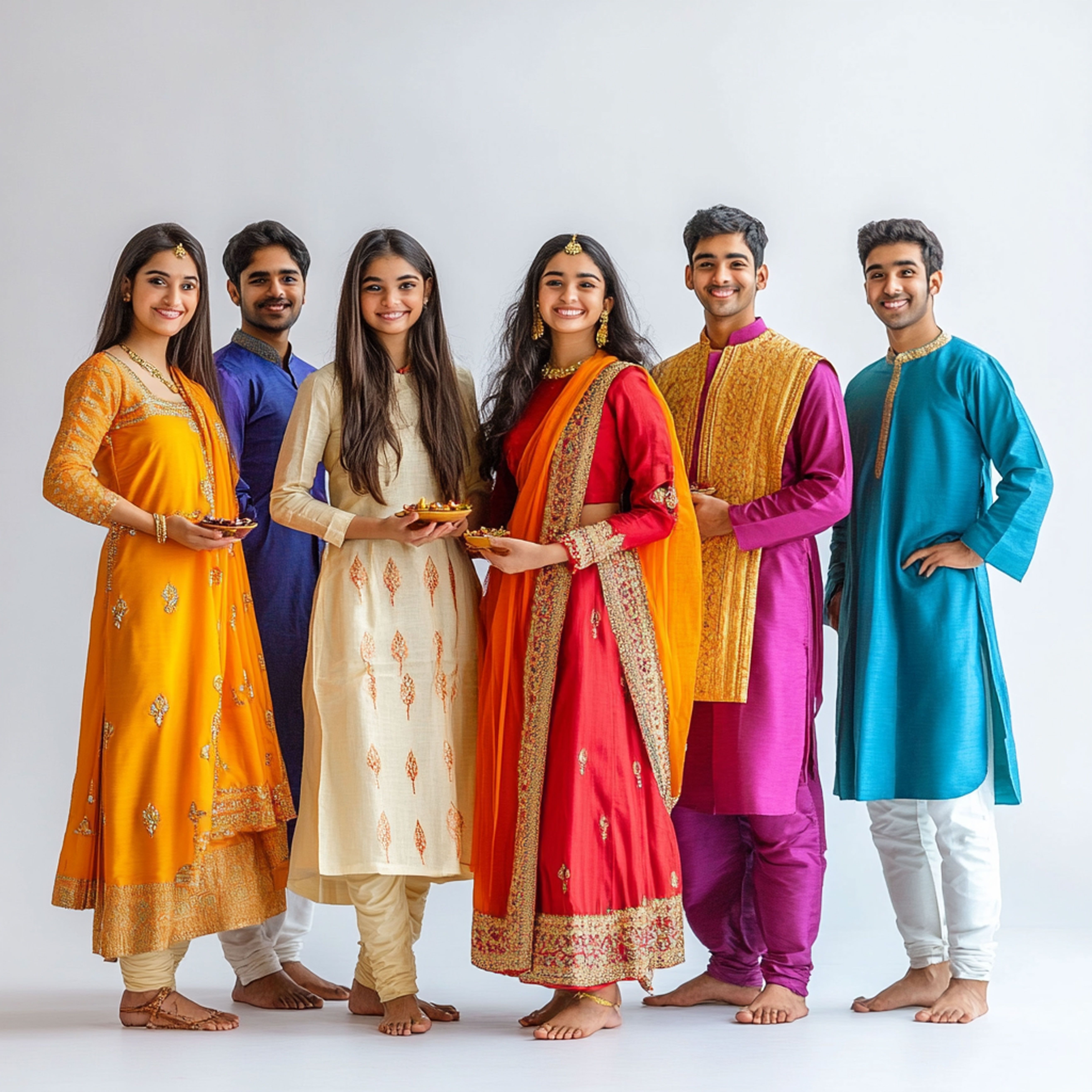How to Style Festival Aesthetic Outfits in India
How AI Fashion Transformed Fabric Color Decisions
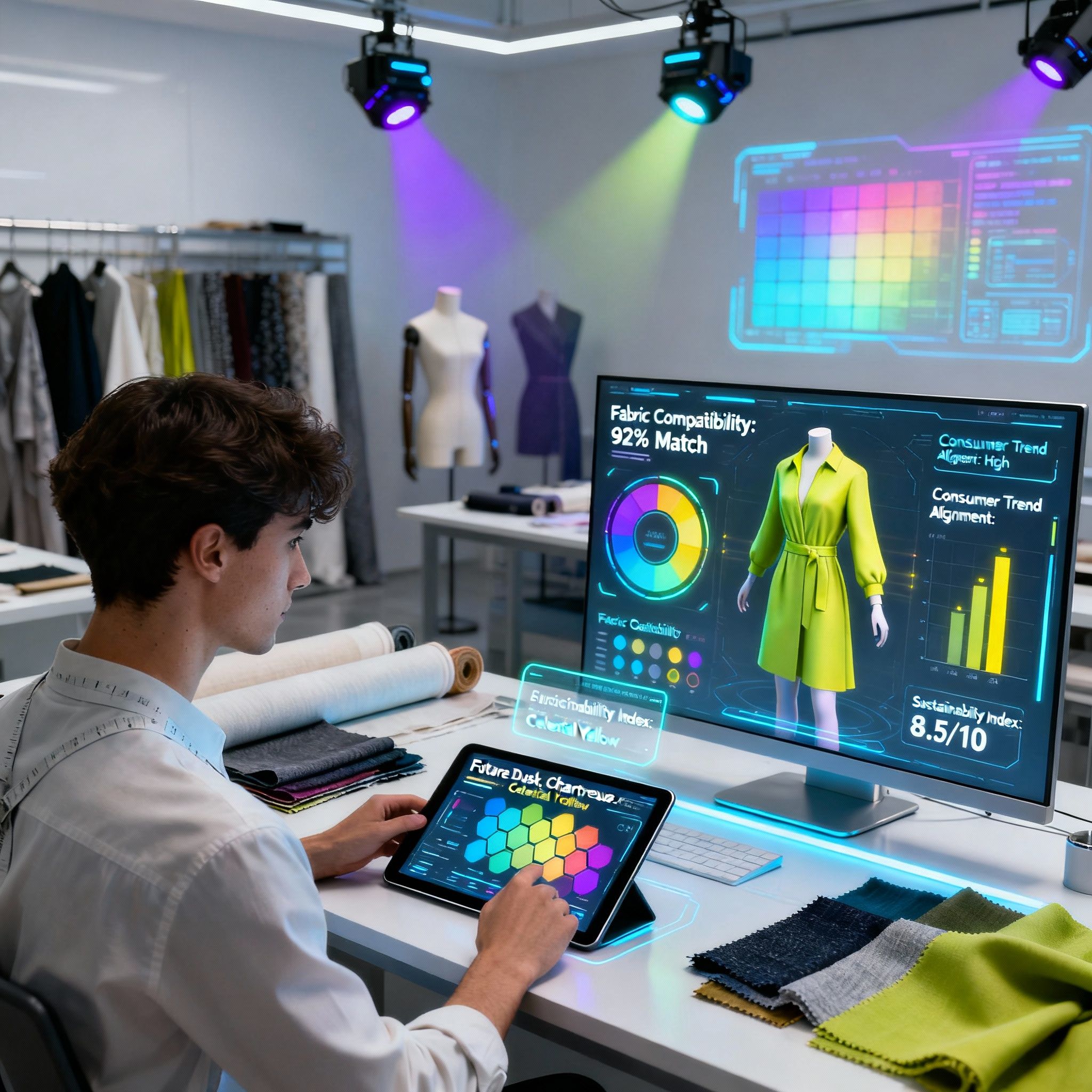

TL;DR
- Using advanced AI fashion systems, brands reduced dyeing waste and improved colour predictability in fabrics.
- AI fashion tools forecast fabric colour preferences and body-tone aligned palettes for better alignment with style science.
- Within the Color, Fabric & Style Science cluster, fabric colour decision-making is now driven by data, not just intuition.
In an era where AI, fashion is rapidly reshaping how fabrics are selected and colours are chosen, designers no longer rely purely on instinct. In the field of fabric colour, the integration of AI into decision-making is enabling brands and manufacturers to pinpoint shades, match tones and fabrics, and align style science with consumer behaviour in real time. This case study dives into how Smart Fashion tools are transforming fabric and colour decisions across design and production and how within the Color, Fabric & Style Science cluster these changes are redefining what constitutes good aesthetic judgement.
Understanding AI fashion in Colour & Fabric Selection
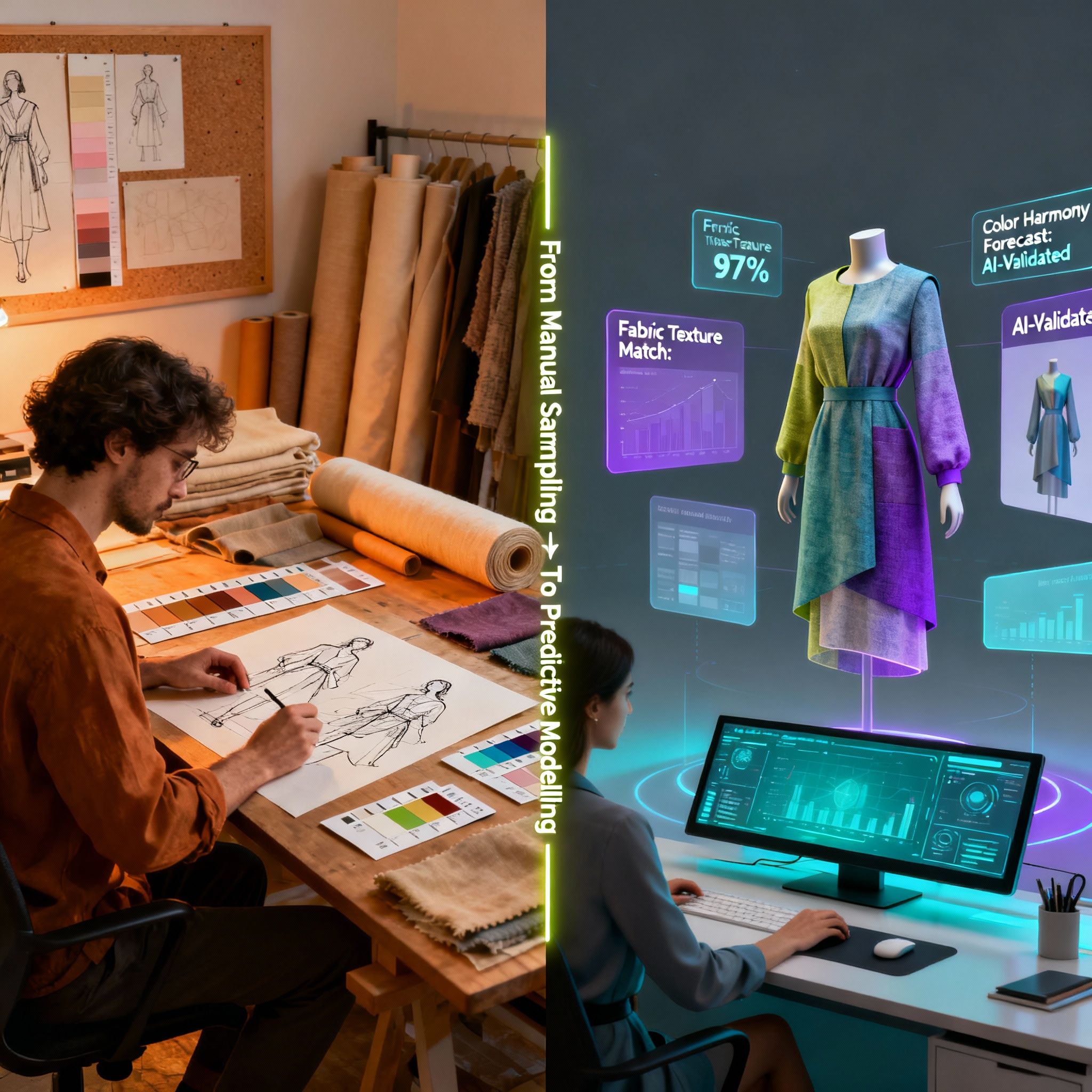
Traditional Process | AI fashion-Driven Process |
Relied on designer’s visual intuition, physical swatches, and seasonal trend boards. | Uses machine learning for fabric-texture recognition, colour gamut analysis, and predictive modelling to ensure accuracy. |
Fabric colour often finalised after multiple dye trials. | Fabric colour predicted and validated digitally before production. |
High dependence on manual sampling. | High confidence through AI-assisted colour forecasting. |
Key Industry Findings
Visual Intelligence in Runway Imagery:
According to a 2024 study, applying machine learning to runway imagery revealed a significant gap between actual colours used and Pantone forecasts showing how AI-Powered Fashion quantifies hidden consumer colour preferences.”
Predictive Accuracy in Fabric Dyeing:
According to a 2025 study by Warren Jasper et al., machine learning can help reduce textile dyeing waste by accurately predicting dry fabric colours from wet samples.
Why fabric colour decisions matter in the style science era
The Shift:
Colour and fabric are now part of one intelligent decision loop blending data, design, and consumer psychology.
The Science:
Recent research shows that Intelligent Fashion systems rely on advanced models like neural networks and optimization algorithms to predict and manage colour accuracy.
The Impact:
- For producers: reduced dye waste, sample costs, and lead time.
- For consumers: improved fit, finish, and emotional connection with colour.
The Outcome:
AI doesn’t just refine colour; it ensures each fabric-tone combination matches both function and feeling.
Case Study Spotlight: AI-Driven Fabric Colour Prediction at Dyeing Stage
In one recent study led by the Wilson College of Textiles in the US, a neural network model was trained on 763 fabric samples in wet and dry states to predict final colour outcome. The study found that “according to the research, a neural network model trained on 763 samples achieved near-perfect accuracy, helping avoid costly errors.”
This meant manufacturers could predict how the wet fabric would look after drying a major factor in fabric colour decision-making. Mistakes here often lead to re-dyeing, wasted material or off-brand hues. The AI in fashion intervention enabled more confident choices of fabrics and shades before full production.
Key Outcomes
- Dramatic reduction in re-work and waste because fabric colour decisions were backed by predictive accuracy.
- Faster turnaround from sample to production, allowing fabric and colour teams to trial fewer versions.
- Better alignment between design intent and final output meaning what the designer envisioned in terms of fabric colour matched production.
How AI fashion Tools Shape Fabric Colour Decisions Pre-Design
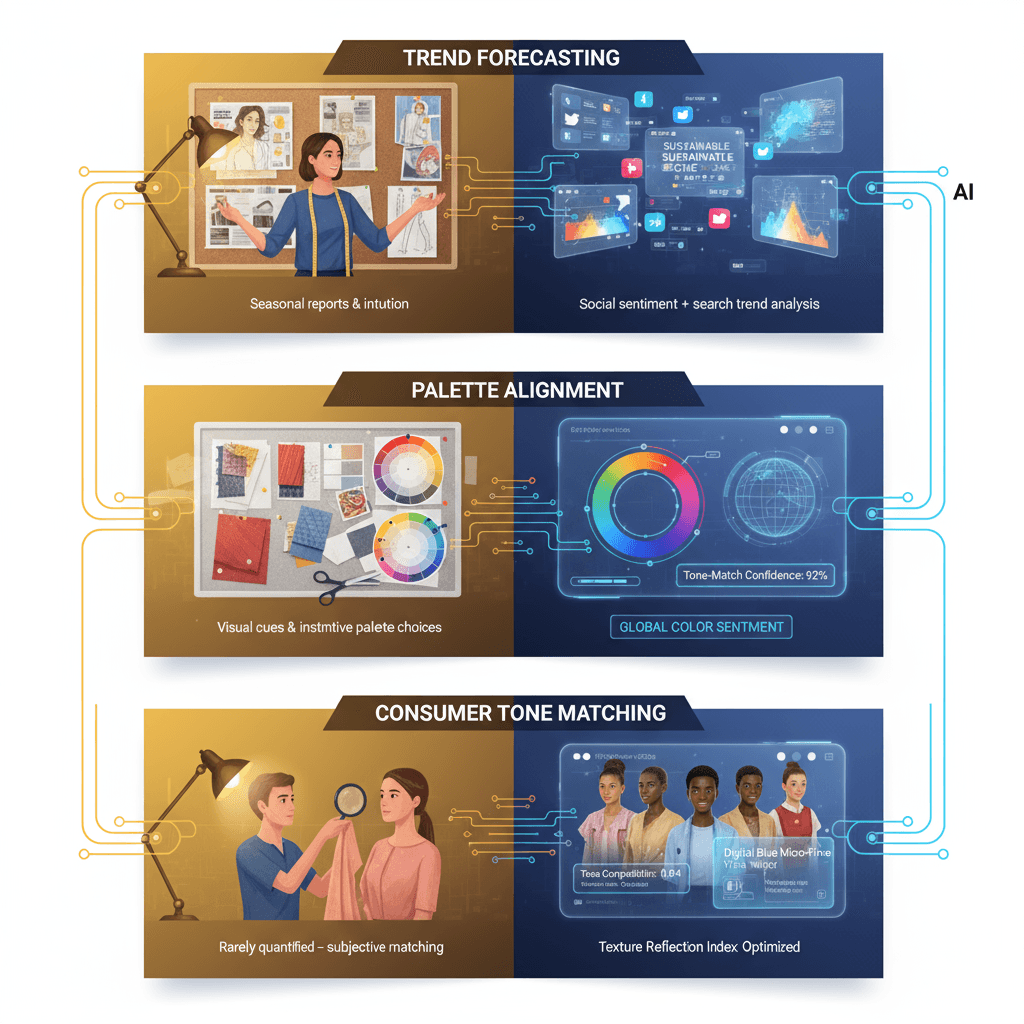
Smart Fashion is redefining pre-design workflows guiding fabric and colour decisions through trend forecasting, consumer tone prediction, and palette alignment based on data, not instinct.
Decision Layer | Traditional Method | AI-Driven Shift |
Trend Forecasting | Dependent on seasonal reports & designer intuition | AI fashion models analyse social-media sentiment, search trends, and purchase behaviour to predict emerging colours and fabric trends. |
Palette Alignment | Based on visual boards & mood cues | AI aligns fabric colour with evolving tones detected from global data streams. |
Consumer Tone Matching | Rarely quantified | AI quantifies skin-tone, lighting, and texture compatibility, personalizing colour recommendations for specific demographics. |
According to a 2023 study on Yenra.com, integrating fine-grained social-media signals into demand forecasting improved prediction accuracy by 24%–57% compared to traditional fashion forecasting models.
Real-World Application Example
- A leading apparel brand used an AI fashion engine to predict that “digital blue” micro-fibre velvet would outperform classic navy among late-Gen Z consumers, due to its online resonance trend.
- The system incorporated fabric texture, sheen, and body-tone data ensuring that fabric colour recommendations aligned with both emotional tone and material feel.
- Result: More tailored, less generic collections with better engagement metrics and reduced sampling waste.
Five Ways AI fashion Enhances Fabric & Colour Decisions
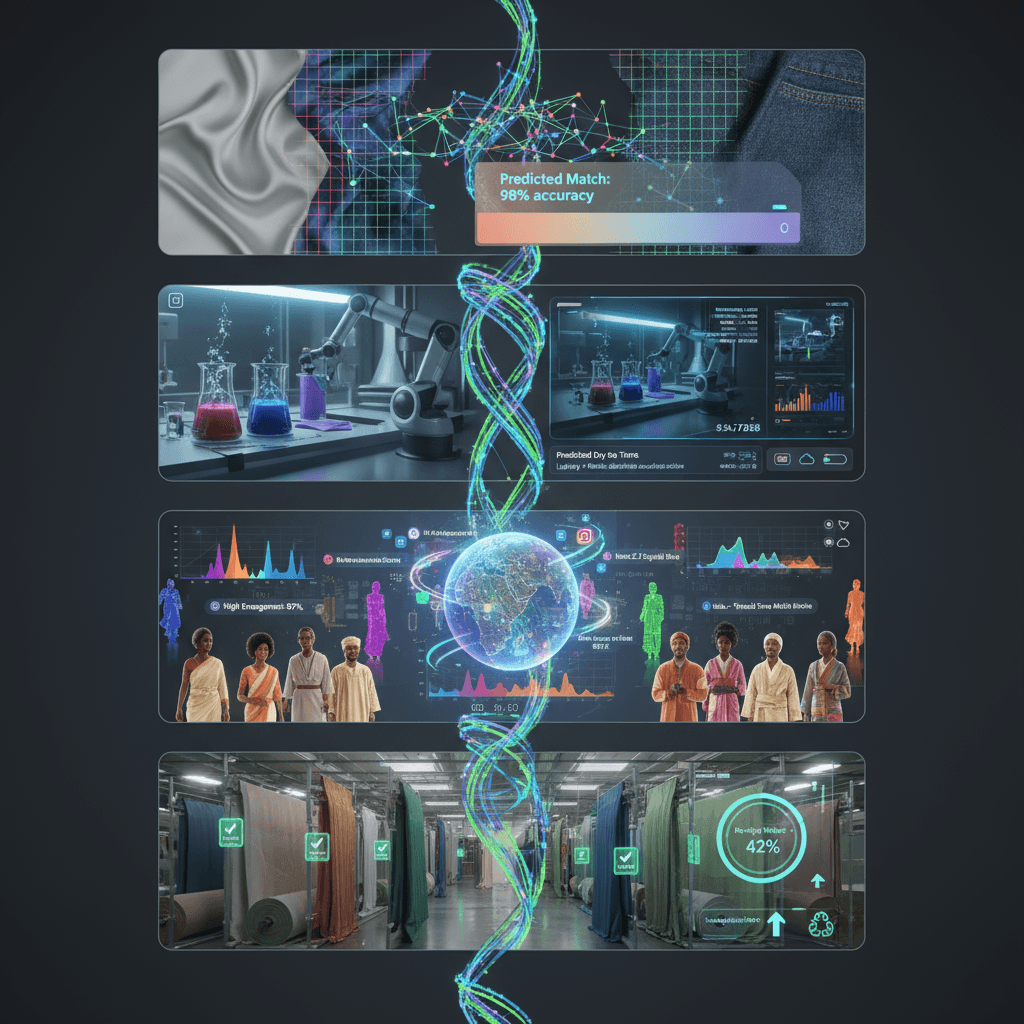
- Predictive Colour Match & Material Compatibility – AI fashion models run colour gamut prediction and match fabric textures so the final shade remains consistent across fabric types.
- Optimised Dyeing Formulation – By predicting how wet-dye will result in dry shade, and fabric behaviour under lighting, design and production teams make better swatch-level decisions.
- Trend-informed Fabric-Colour Pairing – Digital fashion analytics dig into social media and search data to steer fabric and colour choices in line with emerging patterns of style.
- Consumer-Tone & Context-Aware Selection – Intelligent Fashion systems can customize palette suggestions based on wearer variables like skin tone, cultural context or local lighting.
- Waste Reduction through Accurate Fabric-Colour Decisions – With better fabric colour accuracy, less material is wasted through mis-dye or re-runs, aligning with sustainable manufacturing goals.
These capabilities show that fabric colour decisions are no longer isolated tasks; they're embedded within a larger AI strategy.
Future Outlook: Fabric & Colour Decisions in the Age of Intelligence

- Fashion AI will evolve beyond picking colours; it will match fabric finish, weave texture, and user behaviour in real time.
- Designers may soon use an AI twin of a shopper’s colour preferences for instant, tailored fabric suggestions.
- Sustainable fabrics will benefit from AI-led colour prediction, ensuring less waste and first-time accuracy.
In essence:
Brands that embed AI into design and fabric selection will turn fabric colour decisions into a strategic advantage, not an afterthought.
For more on how AI is influencing material selection and fabric strategy, see how Glance AI picks the right fabric types.
Conclusion
Fabric and colour decisions used to live in the hands of designers, trend forecasters and technicians analysing swatches and seasonal palettes. Today, Tech-driven fashion has taken a front seat: it is enabling fabric-colour choices that are smarter, faster and more aligned with wearer preferences.
Within the Color, Fabric & Style Science cluster, this shift means that fabric teams partner with data scientists, designers and material technologists and the outcome is fabric and colour selections that resonate, perform and scale. If your team is ready to embrace fabric and colour decision-making for the next era, leverage AI fashion as the engine driving those choices.
Explore how these principles link to broader fabric-strategy frameworks and deep dive into internal resources such as How AI is transforming Indian fabric types with AI styling.
FAQs
Q1: What exactly is meant by “fabric colour decisions” in this context?
Fabric colour decisions refer to choices about which fabrics (type, finish, texture) and which colour shades or palettes will be used in garments or textiles. When combined with AI fashion tools, these decisions become data-informed rather than purely instinct-based.
Q2: How does AI fashion help with fabric colour accuracy?
AI fashion uses predictive models that analyse how fabrics will behave (e.g., wet vs dry state, colour shift, lighting effects) and suggests fabric-colour combinations that will hold true in real-world production significantly reducing errors and re-work.
Q3: What role does the consumer play in fabric and colour decisions when AI fashion is used?
With AI fashion, the consumer is central: models can incorporate wearer variables (skin tone, regional palette preferences, fabric feel) and trend signals to tailor fabric-colour suggestions, rather than offering one palette to all.
Q4: Are there sustainability benefits when fabric and colour decisions are backed by AI fashion?
Yes, when fabric and colour decisions are more accurate, dyeing mistakes are reduced, re-runs are minimised, material waste falls, and production cycles shrink. This supports sustainability goals within the Color, Fabric & Style Science cluster.
Q5: Can smaller fashion brands implement these fabric and colour decision tools influenced by AI fashion?
While large brands deploy full AI fashion-stack platforms, smaller brands can begin by using trend-forecasting tools, fabric-colour predictive modules and collaborative workflows to embed data into their fabric-colour decisions without huge investment.


